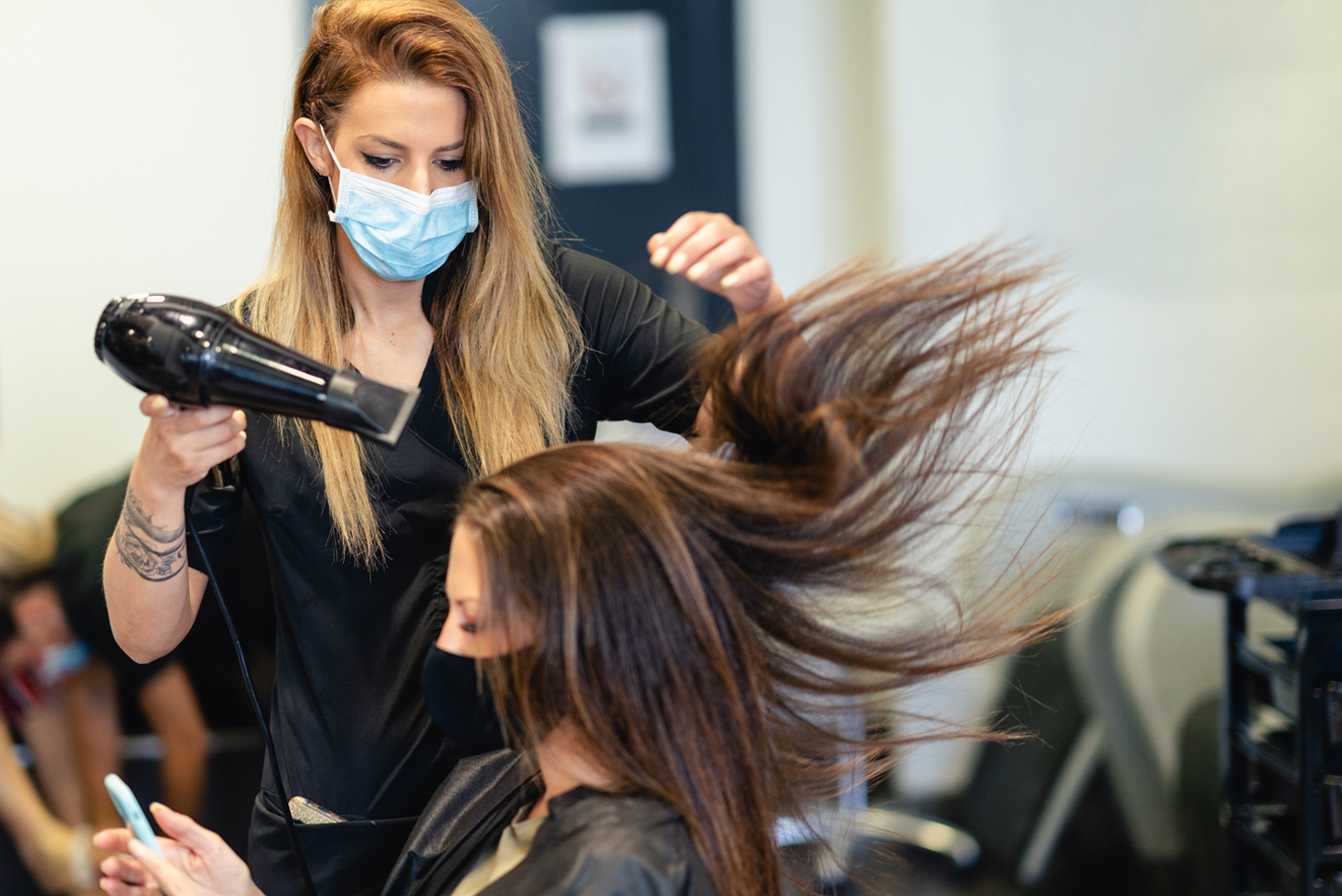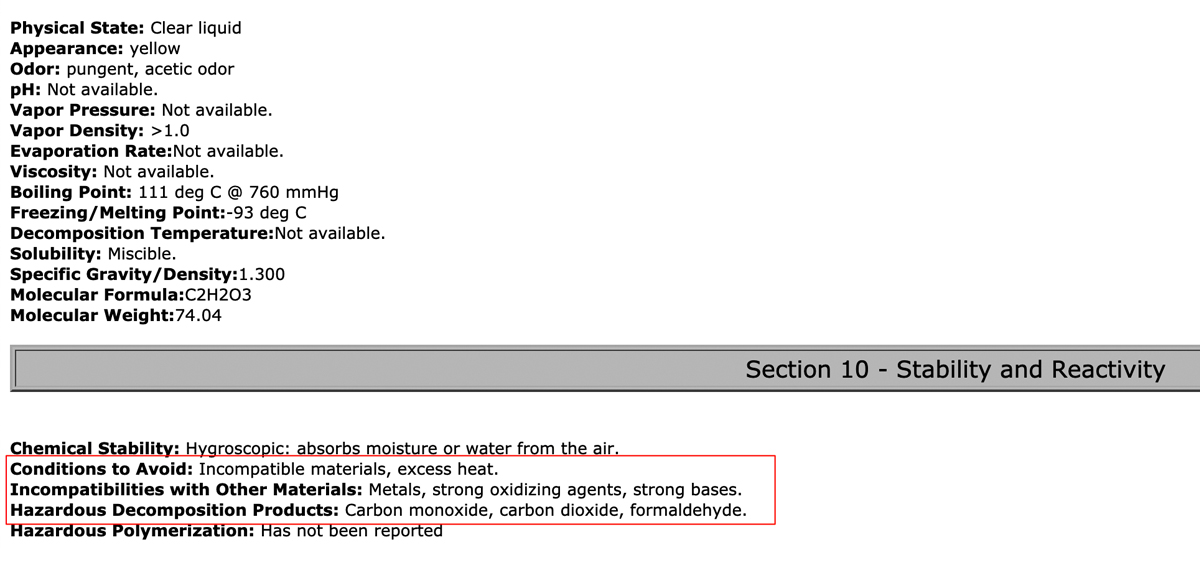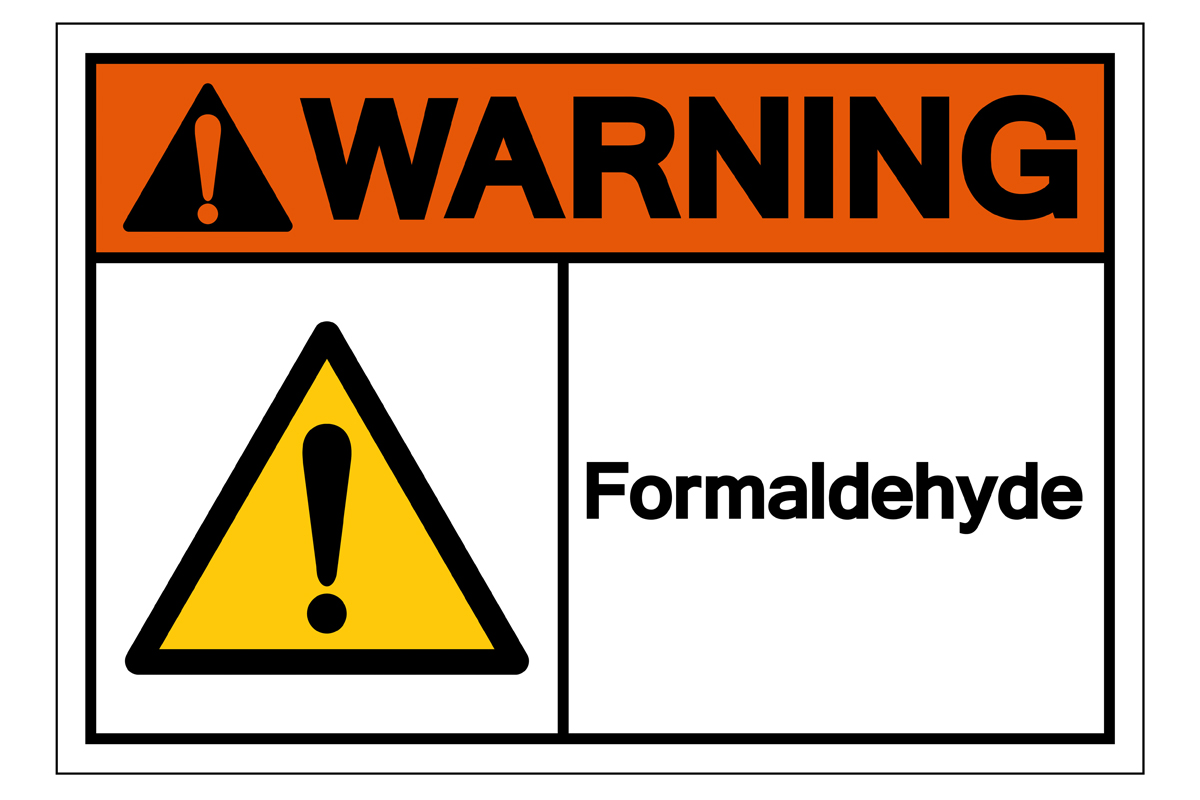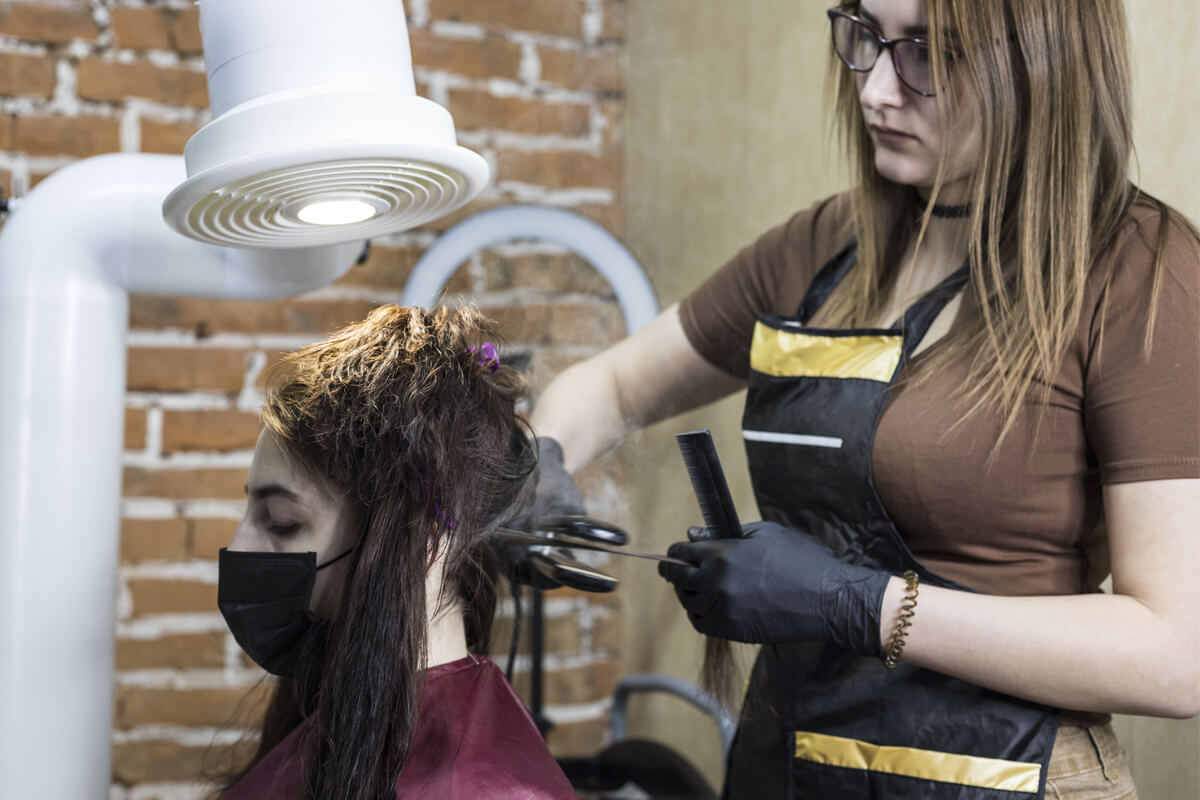Formaldehyde in Keratin Treatments – Why You Should Avoid It
Updated on
This post may contain affiliate links. As an Amazon Associate, we may earn from qualifying purchases.

Brazilian Blowouts have given all keratin treatments a bad rap.
But it’s important NOT to confuse all keratin hair treatments with the doomed Blowouts that got slammed by the FDA due to their high levels of toxic ingredients.
Nowadays, most keratin treatments are “Formaldehyde-Free” or claim to be so.
BUT:
You must still look beyond the labels for hidden dangers and USE THE PRODUCTS AS DIRECTED.
Let me explain why …
When a product says it’s 0% Formaldehyde, this means it does not have ingredients that the FDA has classed as hazardous and Carcinogenic:
- Formaldehyde
- Methylene Glycol
- Formalin
The potential danger, however, lies in other disguised chemicals that have effectively replaced the function of Formaldehyde to comply with regulations.
Let me give you an example.
Most keratin hair treatments that claim to be Formaldehyde-Free have one ingredient in common.
Glyoxylic Acid
If you look at this chemical’s Material Safety Data Sheet in Section 10, as pointed out by the WVE (Women’s Voices of The Earth), you’ll see:

This means when Glyoxylic Acid is subjected to excess heat, it will decompose into Formaldehyde.
So are you looking beyond the marketing labels?
Are you buying the right product?
Are you asking the right questions to your hairstylist?
Table of Contents
- There are a Lot of Conflicting Emotions on This Topic
- So Why The Controversy About Brazilian Blowouts?
- What is Formaldehyde And Why It’s Bad For Your Health?
- So is Formaldehyde-Free Just a Disingenuous Marketing Gimmick?
- Formaldehyde Releasers You Need To Watch Out For?
- Glycolic Acid – A Better and Safer Alternative
- What You Should Do to Protect Yourself and Others
- Steps to Take Before Considering a Keratin Treatment
- Assess Whether You Really Need a Keratin Treatment
- Know Your Allergy Or Pre-Existing Health Conditions
- Make a Shortlist of Keratin Products
- Verify each products’ Ingredients
- Identify Any Red Flags in Reviews
- Verify Each Product’s Usage Instructions
- Ask The Seller Questions if You Think Any Key Information is Missing
- Cross-check With a Hairstylist Before You Buy
- Get A Formaldehyde Air Quality Monitor
- Don’t Get Lost in The Misinformation
- Less Formaldehyde is at Least a Move In the Right Direction
- Always Check for Formaldehyde Releasers
- OR Choose Alternative Smoothing Treatments
- Opinions, Guesswork, Science?
There are a Lot of Conflicting Emotions on This Topic
While some people freak out and vent their anger about how a keratin treatment has damaged their hair or given them bad side effects, I also see some people who swear by it, and will do it every 3 months!
Why?
Because it’s all about being well-informed, taking the necessary precautions, doing patch tests, and getting the best keratin treatment that will work for you.
If you’re not sure, just don’t do it.
Formaldehyde is everywhere.
Car exhausts, plywood, glue, new rugs …even your air fresheners may contain Formaldehyde. But it easily dissipates in the air, which makes it less potent and harmless.
So Why The Controversy About Brazilian Blowouts?
Formaldehyde is a Volatile Organic Compound (VOC). When subjected to conditions like high heat, it becomes a toxic gas.
The Brazilian Blowout treatment requires heat at 450°F to seal the solution into the hair, which triggers the release of a large volume of the gas within a confined area. When this happens, it creates a high concentration exposure, leading to detrimental health side effects.
According to the FDA letter sent in august 2011, the BB had concentrations ranging from 8.7 to 10.4%, which was way more than the recommended limit of 0.2% set by the Cosmetic Ingredient Review (CIR) initially published in 1984 and rereviewed in 2003.
So clearly, the Brazilian Blowout was taking the piss.
By mislabelling their products because they had Methylene Glycol, a liquid form of Formaldehyde that doesn’t turn into the F gas until heated, they were misleading customers and salon workers.
So imagine a hairstylist doing 3 blowouts a day, every day!
Just how wrong and irresponsible it was from the manufacturer to hide such critical information.
After wading through all the press releases and research about the Formaldehyde controversy on keratin smoothing treatments, I have put together some helpful advice on what you should do to protect yourself when getting a keratin treatment.
So read on …
What is Formaldehyde And Why It’s Bad For Your Health?

Formaldehyde is a naturally occurring chemical substance that contains Carbon-Hydrogen molecules. In its pure state, it’s a pungent-smelling colorless gas that is transformed into a polymer and stored as a liquid.
So, where is it actually used?
Formaldehyde is commonly used in industrial materials like glues, adhesives, insulation materials, fungicides, disinfectants, and as preservatives in medical labs and mortuaries.
Talking about mortuaries, here’s an interesting fact …
Did you know?
The link between the Brazilian Blowout and Formaldehyde was an idea developed by a mortician in Brazil 🤔
That’s right!
The famous Brazilian Blowout wasn’t invented by a hairstylist or a haircare brand.
It was a mortician who coincidentally discovered that Formaldehyde solutions used as embalming fluid were straightening the hair of corpses.
That’s why mummies have straight hair!
And so, in 2005, he used this strange discovery to create a product that would make women’s hair poker straight, glossy, and frizz-free even in the highest level of humidity, which makes it challenging for women to tame their hair.
The treatment worked so well that it became one of the fastest-growing salon services worldwide, boasting A-list celebrity fans like Jenifer Aniston, Nicole Richie, Halle Berry, Lindsay Lohan, just to name a few.
But alas, the buzz didn’t last long.
In October 2010, following an investigation on the health risks that salon workers and customers were being exposed to, the US Occupational Safety and Health Administration decided to take action and place a Health Hazard warning on hair smoothing products.
Their report detailed the signs, symptoms, and side effects of Formaldehyde exposure which include:
- Eye irritation
- Nose and throat irritation
- Loss of smell
- Upper respiratory diseases
- Dry and sore throat
- Cough
- Chest pains
- Allergic Dermatitis
- And the potential to cause cancer
They classified Formaldehyde and its equivalents as potential human Carcinogen.
You can read more about the facts by clicking on the links below:
But instead of completely banning the chemical and its close derivatives, the FDA imposed a limit on the percentage that can be used, and issued a report to advise consumers and hair salon professionals on how to take precautions when using them.
It’s been more than 4 years since the FDA’s own scientists determined that these Formaldehyde-laden products are dangerous for salon workers and consumers and urged the FDA to ban them. Instead of taking meaningful action to protect public health, the FDA has the nerve to place the burden on consumers. This is a total abrogation of the FDA’s duty, and the agency must do better. Melanie Benesh
Legislative Attorney - EWG
Here is the FDA’s article advising women considering a Brazilian Blowout:
- Not to use the treatments at home
- Read the list of ingredients
- Report bad reactions
- And ask stylists questions about Formaldehyde content
So there’s the real problem.
If there were a total BAN, manufacturers would deviate entirely from them and find alternative solutions. But since there is no BAN, as long as they stick to the acceptable range, they won’t get flagged or punished.
That’s why there are still many keratin products out there (cough! eBay, Groupon) that are not safe, selling on the black market.
To make it easier for consumers and salons, the OSHA published a list of ingredients to look out for, which can release Formaldehyde gas when subjected to heat.
These ingredients are also known as Formaldehyde synonyms:
- Methylene glycol
- Formalin
- Methanediol
- Paraformaldehyde
- Formic Aldehyde
- Methanal
- Timonacic Acid
- Thiazolidinecarboxylic Acid
Complete List Of Formaldehyde Releasers:
So is Formaldehyde-Free Just a Disingenuous Marketing Gimmick?
Most keratin brands that claim to be Formaldehyde-free would back up their claims for not having any of the mentioned ingredients, which technically may be correct.
But any professional hairstylist will tell you this:
There’s no such thing as a 100% chemical-free hair straightening treatment.
For a keratin treatment to give you frizz-free, smooth and shiny hair for months, it must contain Formalin or other chemicals in the same family. Otherwise, it’s just a conditioning treatment that will last for a few days.
So is “Formaldehyde-Free” just a disingenuous marketing gimmick?
We’ve looked at 57 products on Amazon, Ulta, Sephora, and Target combined to verify their ingredients.
And unfortunately, all of them had a potential Formaldehyde releaser.
This is a serious problem.
Why?
Because it gives consumers and hair salon professionals a sense of false confidence. That’s why you should always read past the label, decode every ingredient, and understand the usage instructions correctly.
So let’s take a look at some of the common chemicals found in Formaldehyde Free keratin products.
Formaldehyde Releasers You Need To Watch Out For?
- Glyoxylic acid
- Glyoxyloyl Carbocysteine (Oxoacetamide carbocysteine)
- Phenyl Trimethicone
Technically, they are not Formaldehyde, but these ingredients can still potentially decompose into Formaldehyde when subjected to conditions like heat.
Read: Is “Formaldehyde-free” really Formaldehyde free?
Glyoxylic Acid
Glyoxylic acid is the most popular alternative to Formaldehyde in new keratin treatments. It belongs to the Aldehyde family.
Although not as effective as a Formaldehyde equivalent, Glyoxylic acid can produce semi-permanent hair straightening and smoothing results without breaking the Cysteine disulfide bonds.
Potential Danger:
When exposed to heat of 450°F, it emits Formaldehyde.
Glyoxyloyl Carbocysteine
Glyoxyloyl Carbocysteine (also known as Oxoacetamide carbocysteine) is another chemical from the Aldehyde family produced by combining Glyoxylic acid, Cysteine, and Acetic acid.
Potential Danger:
When heated at 450°F, it can release Formaldehyde but in much less amount.
Reference: Dr. Ali Syed et al. From the Midwest Society for Cosmetic Chemist in 2012
Glycolic Acid – A Better and Safer Alternative
Glycolic acid is a colorless Alpha-Hydroxy acid derived from sugarcane.
It’s not part of the Aldehyde family.
According to the Cosmetic Ingredient Review, when the newer versions of the Brazilian Blowout Zero were tested, Glycolic acid formulations did not release Formaldehyde.
A popular product that uses this ingredient as an alternative to Formaldehyde is the Cezanne Perfect Finish Keratin Smoothing Treatment.
According to Cezanne, this product did not release any trace for Formaldehyde when subjected to rigorous vapor analysis tests set by the National Institute of Safety and Health (NIOSH).
Read more: How was Cezanne tested for Formaldehyde?
Keratin and silk proteins on their own are not sufficient to defrizz the hair and make them smooth over a long period of time.
Other than the Cezanne smoothing treatment, any product that promises to cure your endless frizz for a long period of time will most likely contain the F word or a similar chemical that realign bonds in the hair.
That’s why consumers and salon professionals are asked to exercise caution when performing keratin treatments, even if the products claim to be free from Formaldehyde.
What You Should Do to Protect Yourself and Others
Verify your product’s Ingredients Before Use
When buying keratin treatments online, always check the bottles to make sure the ingredients match the online description.
Sometimes, manufacturers may use deceptive methods to sell products by omitting dangerous chemicals from the sales page.
If you see any ingredients on your bottle not as advertised on the product page, contact the seller immediately and ask for clarifications.
Watch Out for Counterfeits
Watch out for counterfeit products rife on marketplaces like eBay, Groupon, and Facebook.
Not only are these products ineffective due to lack of key ingredients, but they can also pose real risks because of toxic additives that are not regulated.
Keratin Cure, for example, a well-known brand in the keratin treatment space, has warned consumers to watch out for counterfeit products pretending to be from them.
Check Expiry Dates
According to SafeCosmetics, expired products can release Formaldehyde. So make sure to verify the expiry dates on products, especially if they are selling for cheaper prices or at discounted rates.
Check The Product With Your Hairstylist First
If you plan to do a keratin treatment in a hair salon, ask your stylist to give you more information about the product that will be used.
The FDA suggests that clients request Safety Data Sheets for their products.
Report Bad Reactions
If, for any unfortunate reason, you’ve had a bad reaction to a keratin treatment, please report it to the FDA’s consumer complaint portal.
Your report will help authorities investigate the product and also help others who may be at risk.
Do Not Use A Keratin Treatment if You’re Pregnant
You should not be doing any chemical straightening or smoothing while you’re pregnant.
When the manufacturers say not to use [their product] on pregnant women, that should be the first clue that their products are unsafe. Natalija O'Toole
Stylist in New York City - Cosmopolitan Magazine
According to the Center for Disease Control CDC, exposure to Formaldehyde can affect your fertility or even lead to miscarriage when you’re expecting.
Steps to Take Before Considering a Keratin Treatment

Assess Whether You Really Need a Keratin Treatment
You don’t have to do a smoothing treatment just because everyone’s flaunting it on Instagram!
A keratin treatment does help if your hair is in bad condition. But if you’re simply doing it to glam up, it’s better to go for an anti-frizz treatment.
Know Your Allergy Or Pre-Existing Health Conditions
If you have sensitive skin, breathing problems, or any other types of allergies, it’s essential to consider them before you try a keratin treatment.
You can look for Formaldehyde Patch Tests or ask your hairstylist to do a small patch test for you, wait for a few days to assess the reaction, and then decide.
Make a Shortlist of Keratin Products
Before you buy a Keratin treatment to do at home, make a shortlist of products. It will help you narrow down your choices, so don’t overwhelm yourself and overlook important details.
Verify each products’ Ingredients
Once you’ve narrowed down your choices, check each product’s ingredients for more information.
You can use online tools like:
Also, Lookup MSDS (Material Safety Data Sheets) on Google if available.
If you can’t find any information about a particular ingredient, email the seller/brand/company directly and ask for clarification.
Identify Any Red Flags in Reviews
I always check for a product’s reviews – especially the bad ones.
Product reviews are there to help you identify critical information like:
- Allergic reactions
- Product safety
- Mislabelling
- Fake positive reviews
- Counterfeit products
So don’t ignore them. Watch the reviews like a hawk.
Verify Each Product’s Usage Instructions
Usage instruction is a crucial part of the process.
I expect most women to have their keratin treatment done by a certified hairstylist in a salon because a hair salon provides the necessary space and measures required to perform such treatments with the correct safety protocols.
But since many keratin treatments are sold online and marketed as “easy to do at home,” many people think it’s easy.
But this is where they go wrong.
When you do a keratin treatment at home, it’s easy to forget protocols like:
- Ventilation
- Protective eyewear
- Heat settings on the straightener
- Using a face mask
- The amount of product to use
And most importantly, what to do if something goes wrong!
So read the instructions properly and plan well and plan for contingency as well.
I will recommend you have someone to help you with the application process. It also helps to have a second pair of eyes in case you’ve misread the instructions.
Ask The Seller Questions if You Think Any Key Information is Missing
Did the seller fail to mention what temperature to use to seal the treatment?
Make sure you ask.
Also, ask if this temperature is likely to break down any chemicals in the product into toxic gases.
Cross-check With a Hairstylist Before You Buy
You can always ask questions on forums, Quora, Facebook, Reddit, Twitter, etc.
Social media and online communities can be more helpful than you think.
Pop a question asking for a hairstylist to give her thoughts, and you’ll most likely get a few thorough answers.
Get A Formaldehyde Air Quality Monitor
Did you know?
There is a device that can monitor Formaldehyde levels in the air around you and alert you if the level is dangerous!
I only came across this recently on Amazon, and I thought this would be so helpful for hair salons.
Check out the Temptop Air Quality Formaldehyde Detector on Amazon.
Temtop Air Quality Monitor Formaldehyde Detector
Don’t Get Lost in The Misinformation
It’s easy to feel overwhelmed and get lost in all the misinformation online.
So take it one step at a time and make a thorough assessment if you’re doing your keratin treatment for the first time or trying a new product.
Even if you have enough experience, I believe these tips will still help you.
Less Formaldehyde is at Least a Move In the Right Direction
The industry’s research and innovation to make keratin treatments without Formaldehyde a reality is definitely gathering momentum as more and more consumers demand clean products.
One promising brand to check is Cezanne, which seems to be making some huge steps towards achieving a truly Formaldehyde-Free keratin hair treatment.
I’ve seen so many Pro hairstylists and hair experts talking about it, and I am so eager to try it out myself.
So watch out for a review when I get my hands on it.
Always Check for Formaldehyde Releasers
Don’t blindly trust companies that say their products are safe with 0% Formaldehyde.
- Check MSDS Sheets
- Review usage instructions for any red flags
- Read reviews online
- Email the company for more information
- Ask a hairstylist for help
OR Choose Alternative Smoothing Treatments
It’s no secret that keratin hair smoothing treatments are excellent at taming frizz and restoring hair damage.
But no one wants to splash out a lot of money on a treatment to end up with health side effects.
There are other products out there that are safer and won’t leave you anxious.
For example:
- Amino acid treatments
- Argan oil anti-frizz treatments
Amino Acid Treatment
Hair smoothing treatments with silk amino acids are excellent at fortifying and restoring damage to the hair.
These treatments boost hydration and replace lost keratin in the hair rather than breaking the cysteine bonds to realign them.
Argan Oil Anti Frizz Treatments
Argan oil-based anti-frizz treatments are excellent styling products that can tame frizz and keep your hair in check. However, the effects won’t last for long.
But who needs sleek and stylish hair when at home chilling in pajamas anyway!
I would just wrap my hair up in a bun and get on with it.
Honestly, I don’t need to be looking like Jennifer Aniston 24/7.
Opinions, Guesswork, Science?
As with anything, there are risks and benefits to any cosmetic treatments that only YOU can make a decision on.
There’s plenty of opinions and science available online to help you.
So use the information, and do your due diligence.
Just because a keratin product claims to have zero Formaldehyde, you shouldn’t blindly trust it.
It’s always a good idea to discuss with a professional stylist to give you advice beforehand.
References & Citations
- OSHA Factsheet on Formaldehyde
https://www.osha.gov/sites/default/files/publications/formaldehyde-factsheet.pdf - Timeline: The FDA’s Failure to Regulate ‘Brazilian Blowout’ Hair Treatments
https://www.ewg.org/research/brazilian-blowout-timeline - Formaldehyde in hair products and Protecting Workers Health
https://www.osha.gov/hair-salons/worker-health - Hazard Alert: Hair Smoothing products that could Release Formaldehyde
https://www.osha.gov/sites/default/files/publications/hazard_alert.pdf - The Fair Packaging Label Act
https://www.ftc.gov/enforcement/rules/rulemaking-regulatory-reform-proceedings/fair-packaging-labeling-act-regulations-0 - Chemicals that can release Formaldehyde
https://www.osha.gov/hair-salons/products - Cosmetic Ingredient Review Safety Assessment of Formaldehyde
https://journals.sagepub.com/doi/10.1177/1091581813511831
About the Author
 Shehnaz Shirazi
Shehnaz ShiraziShehnaz Shirazi has been writing in the beauty and cosmetics industry for over 8 years, sharing her expansive hair care and beauty knowledge. Shehnaz researches and tests new hair care trends and publishes her insights here.
